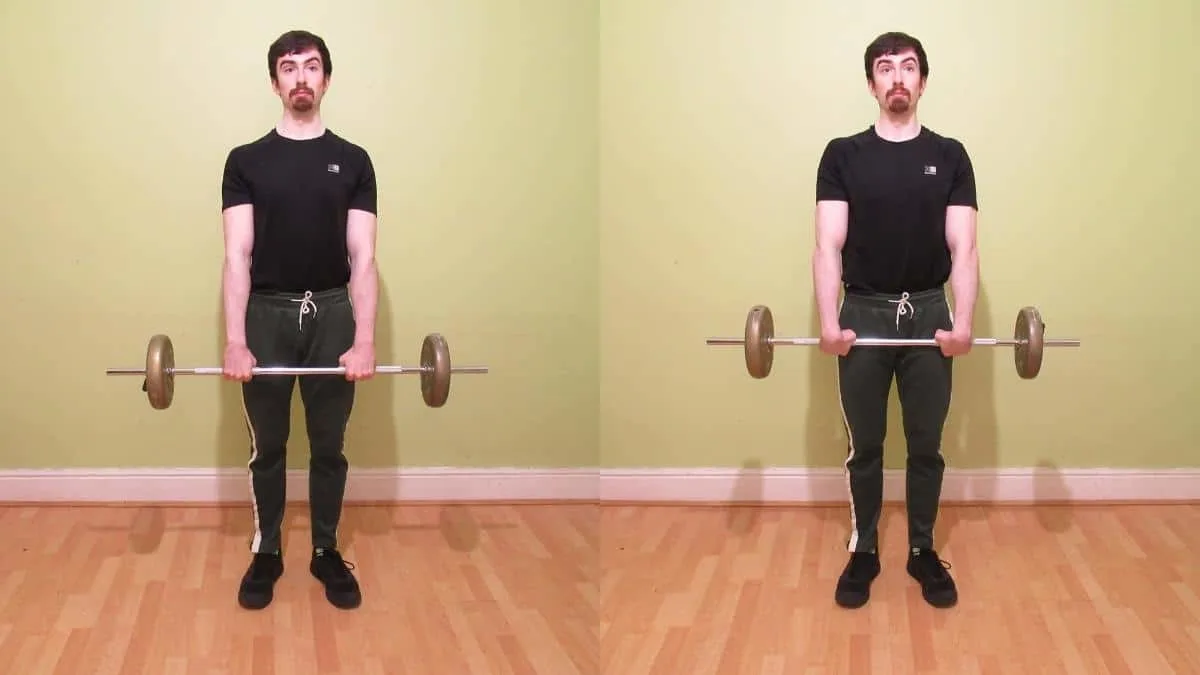The standing wrist curl is one of the all-time great forearm exercises; it’s convenient, it’s easy to set up, and it absolutely blasts your forearm flexors.
That said, even though the technique is relatively simple, many people still mess it up. So after the tutorial, we’ll get straight into the training tips so that you can get the most from each set of standing wrist curls that you perform.
Related guide: shoulder and forearm training
How to do the standing barbell wrist curl
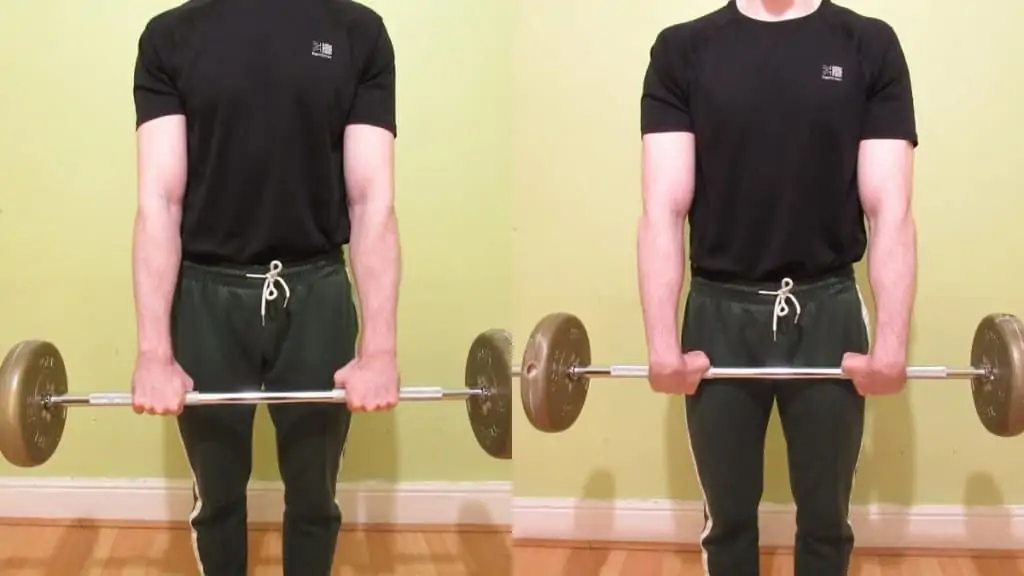
- Hold a barbell in front of you with a shoulder-width overhand grip.
- Look straight ahead and ensure that your elbows are fully locked out.
- Curl the bar by flexing your wrists towards you. Your upper arms should remain still.
- Squeeze the underside of your forearms as hard as you can for a second.
- Slowly lower the weight under control until your wrists are completely extended.
- Repeat for 3-4 sets of 8-15 reps.
Standing wrist curl training tips
Doing the barbell wrist curl standing has its advantages over regular palm up barbell wrist curls over a bench. But in order to get those benefits—which you’ll discover in the next section—you must follow these 3 critical training tips.
Focus on the contraction

Standing forearm curls of any kind are the most challenging in the contracted position, where your wrists are fully flexed.
This is because when you wrists are extended, i.e., when you’re just holding the barbell (as if you were about to start doing shrugs), the tension is mainly going through your trapezius muscles in an isometric fashion. In other words, your forearms aren’t doing much work at all.
Therefore, to maximize the effectiveness of each rep—and to squeeze the most muscle growth out of each workout—it’s crucial that you contract your forearms as hard as you possibly can.
Not only will this technique result in greater gains, but you’ll naturally feel an intenser pump because when you squeeze a muscle hard, you’re shuttling more blood into it. [1]
Perform high reps

As much as I like the standing barbell wrist curl for building lower arm mass, I won’t deny that the range of motion (ROM) is tiny.
A small ROM doesn’t necessarily make an exercise bad, though. It just means that you need to lift with high reps exclusively if you want to get enough time under tension to stimulate new muscle growth. That’s why I recommend sets of 8-15 reps for most lifters.
While 8 reps isn’t a lot, if you’re holding the contraction for a second, you’re still getting decent time under tension. Just make sure to work up to that heavy set of 8 and stick to mainly high repetitions if you can.
Lower the weight under control
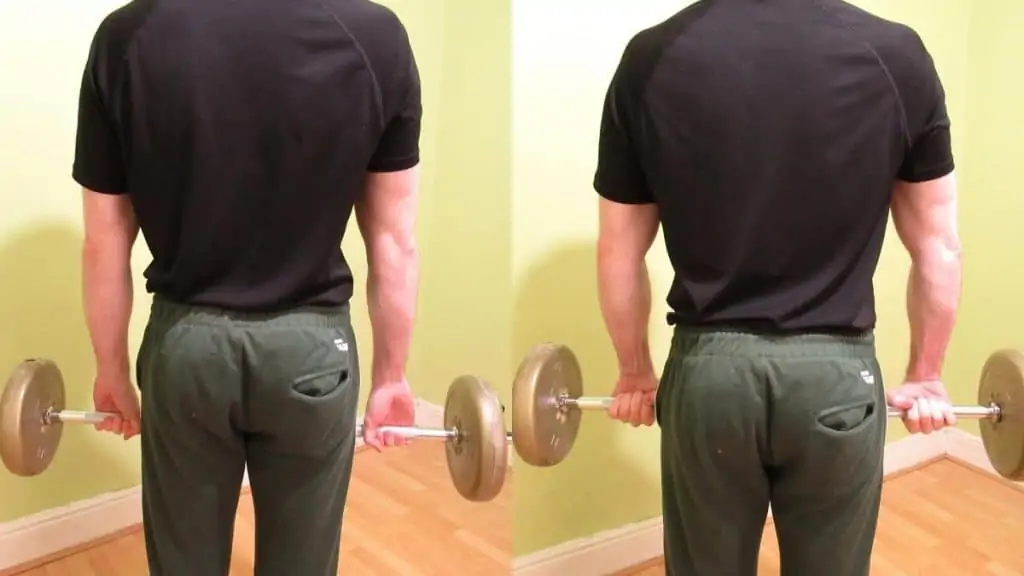
Notice the significance of the phrase time under tension?
It means that your muscles need to take the strain in order to grow. So, don’t just let the weight drop after you’ve put all that effort into getting a quality contraction.
Instead, lower the weight slowly so that your flexors get fully stretched out. As research shows, the eccentric part of the rep, also known as the lowering phase, is extremely important for eliciting hypertrophy. [2]
Read more: forearm workouts with resistance bands
Standing wrist curl benefits
Now that we’ve learned the proper form, it’s time to see the benefits that we can expect to gain from the standing wrist curl if we train consistently.
Greater training efficiency
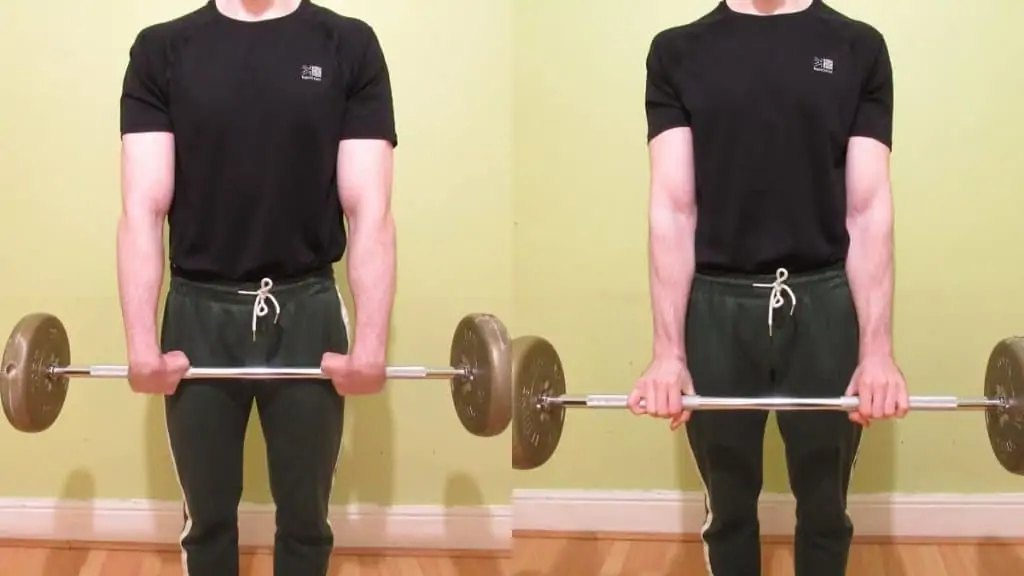
As much as I enjoy doing the behind-the-back barbell wrist curl, it’s tough to get a proper grip on the bar because you can’t see where you’re putting your hands.
Likewise, performing a standard dumbbell wrist curl means that you need to wait for a bench to become available. This can be a harrowing experience in busy commercial gyms.
But with standing wrist curls, you just pick up a bar (fixed or Olympic) and lift. It’s that simple.
You might not think that saving a few minutes is a big deal, but since many lifters are inclined to skip forearm work altogether, knowing that your sets won’t take too long can be a great incentive to train your lower arms consistently.
Best of all, you can pair this drill with standing reverse wrist curls and save even more time while getting an incredible pump in the process.
Massive forearm flexors
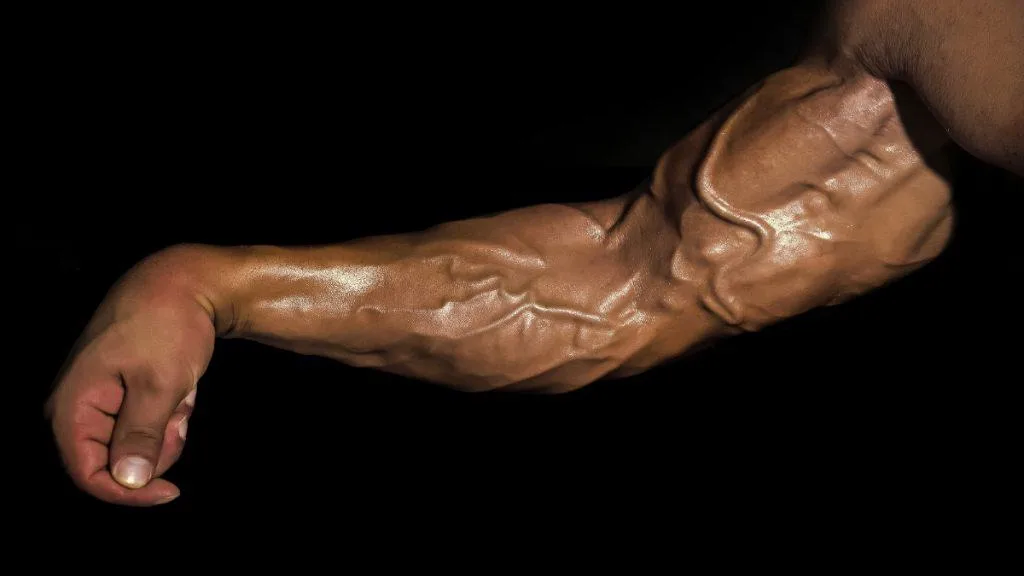
Standing forearm curls generally allow you to lift more weight than any other lower arm exercise. As such, it’s a great mass builder.
While there are many fancy forearm movements, which we’ll explore in just a sec, sometimes just sticking to the basics gets the best results. This is because as a beginner and intermediate, you simply don’t need to do 3 different forearm drills to get maximum results.
In fact, most people are better off simplifying their exercise selection and focusing on their form and on progressive overload.
Stronger wrists
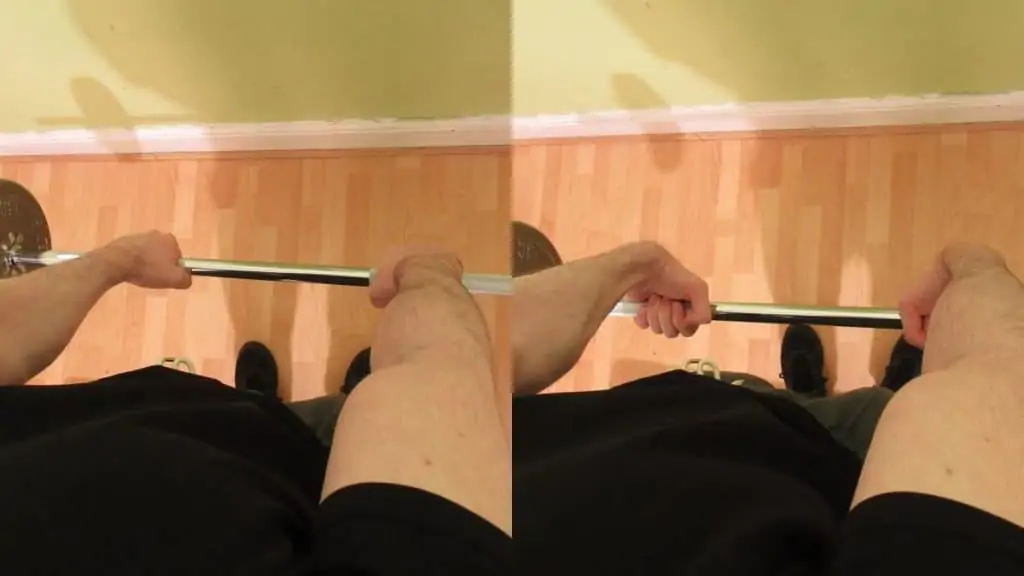
Although using bad form can often cause wrist sprains, lifting with the proper form during standing wrist curls will strengthen your wrists and make them more injury resistant because you’re getting them used to handling significant tension.
See also: kettlebell exercises for forearms
Standing wrist curl alternatives

As mentioned, doing the barbell wrist curl standing is ultra-convenient and also allows you to lift heavy weights. However, there are other great moves that you can do for your forearms.
Each of these links takes you to a full tutorial complete with exercise–specific training tips that will help you maximize your muscle growth.
- Barbell reverse wrist curl
- Cable wrist curl
- Dumbbell reverse wrist curl
- EZ bar wrist curl
- Forearm plate curl
- Forearm twist
- One arm dumbbell wrist curl
- Seated dumbbell palms down wrist curl
- Wrist roller exercise
The verdict on standing wrist curls: Effective or not?
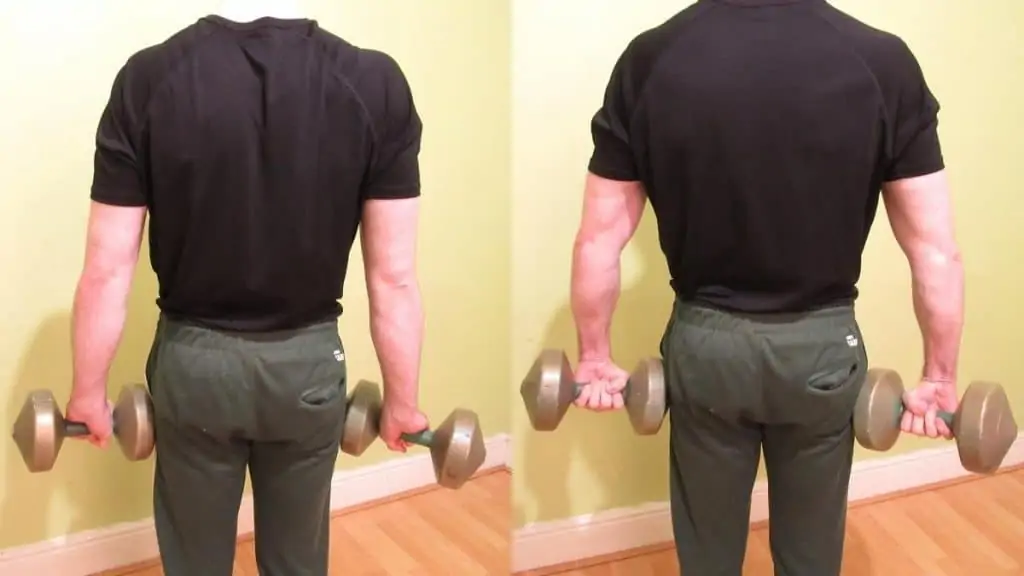
The standing wrist curl is an undeniably effective exercise. Unlike similar drills, the setup is virtually effortless because you can just grab an appropriate fixed barbell and start lifting,
Moreover, many people have weak lower arms, so the standing barbell wrist curl can really help to protect against muscle sprains by strengthening this critical area.
Strengthening your forearms will also improve your performance in compound lifts because your grip won’t give out as quickly. This, in turn, will help you to achieve a more muscular physique.
References
- Lacerda, L. T., Martins-Costa, H. C., Diniz, R. C. R., Lima, F. V., Andrade, A. G. P., Tourino, F. D., Bemben, M. G., & Chagas, M. H. (2016). Variations in Repetition Duration and Repetition Numbers Influence Muscular Activation and Blood Lactate Response in Protocols Equalized by Time Under Tension. Journal of Strength and Conditioning Research, 30(1), 251–258. https://doi.org/10.1519/jsc.0000000000001044
- Roig, M., O’Brien, K., Kirk, G., Murray, R., McKinnon, P., Shadgan, B., & Reid, W. D. (2008). The effects of eccentric versus concentric resistance training on muscle strength and mass in healthy adults: a systematic review with meta-analysis. British Journal of Sports Medicine, 43(8), 556–568. https://doi.org/10.1136/bjsm.2008.051417

